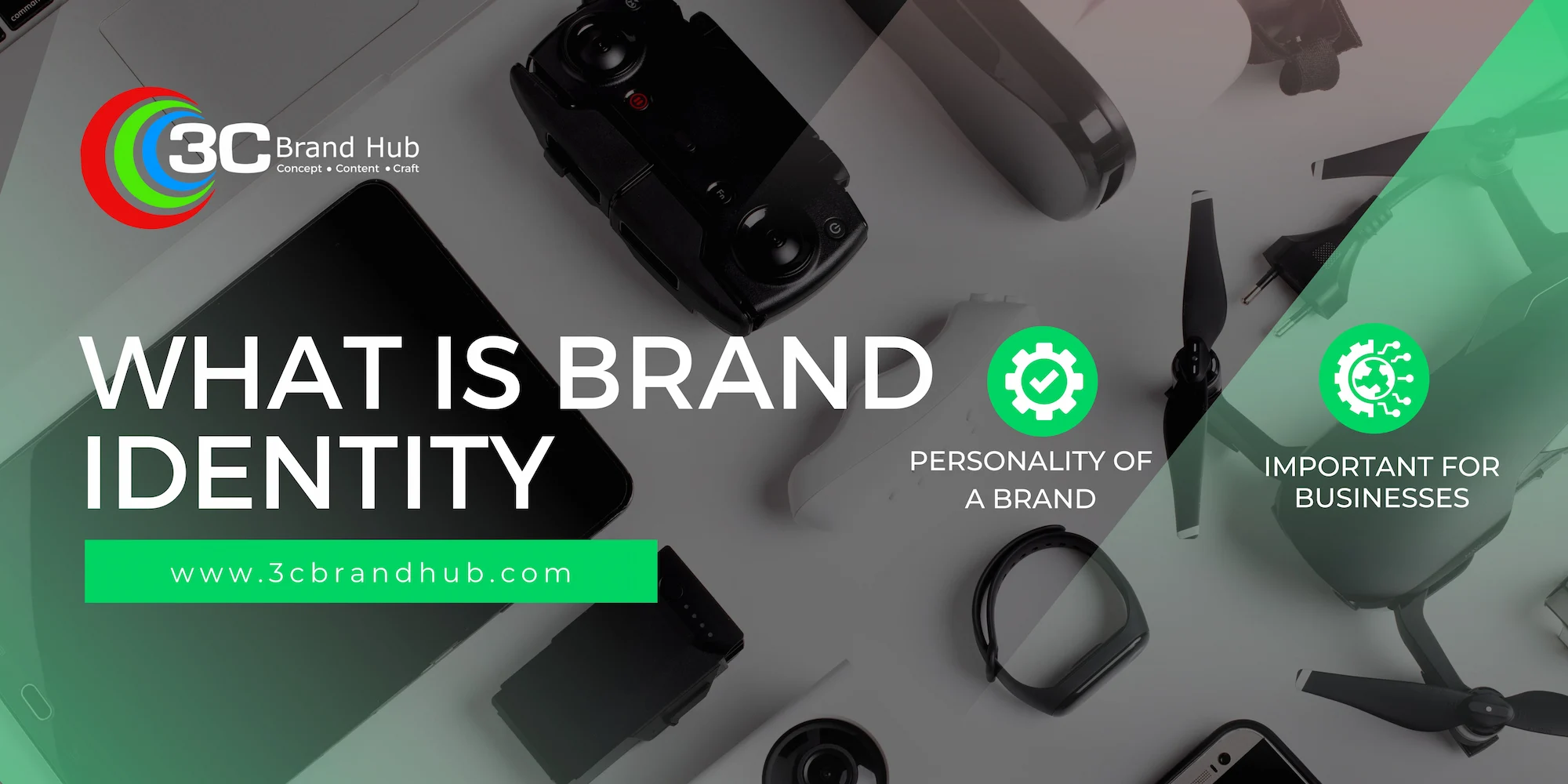A well-defined strategy serves as the backbone of every successful brand. Want to learn how to build a brand strategy? Read on to find out.
Have you ever wondered how brands try to stand out from their competitors? Starting from the very look of their virtual and physical appearances to the very tone they use in interacting with their customers. It is the brand strategy that helps them do that.
Getting to know what brand strategy is in detail with the help of leading branding agencies like 3C Brand Hub, you will be surprised to realize that it is the sum of a series of elements. If your brand identity is what helps you stand out from your competitors, the basic set of rules that you stick to create your brand identity is what gets defined as your brand strategy.
There’s nothing quite as helpful as learning from successful brands’ examples when figuring out how to create a practical branding strategy for your own business.
What is Brand Strategy?
Brand strategy is the strategy that businesses develop to achieve their long-term business goals. Making a brand get identified and liked by its potential customers is the very first requirement for that. One needs a proper brand strategy to achieve that.
Having a compelling brand strategy helps a business on various fronts. Most importantly, it helps create a positive impression about your brand among your target audience. Secondly, a business’s long-term survival and growth is directly influenced by its brand strategy. Creating a positive customer experience and establishing a brand identity are other areas where brand strategy can have a significant impact. Having said that, you may be wondering in what way brand strategy and marketing strategies are different. Let’s find that out.
Table of Contents
Brand Strategy Vs Marketing Strategy
A lot of people assume that brand strategy is the same as marketing strategy. Although they are related and share many common features, they are not the same. Just like a brand is different from the product or services it sells, brand strategy and marketing strategy are different from one another.
Let’s take, for instance, the internationally reputed electronics brand Samsung. As a leading electronics brand, it has a well-established brand strategy. Coming to its marketing strategy, Samsung brings a range of consumer goods to the market. Television, refrigerator, washing machines, mobile phones, and so forth. For each of its flagship products, it uses a distinctive marketing strategy that is in alignment with its target audience’s buyer persona.
Having understood the difference between brand strategy and marketing strategy, let’s explore the importance of brand strategy.
What is the Importance of Brand Strategy?
The following points will help you understand how important brand strategy is for a business to succeed in the long run.

What makes a brand different from its competitors? Take Pepsi Vs Coca-Cola. While both brands sell similar products, they are different in their unique ways. It is their brand strategy that makes that difference.
A business with a successful brand strategy will easily manage to get recognized by its potential customers. Because the strategy ensures that the customer gets sufficient exposure to the brand’s messaging at different touchpoints.
When you begin to grow your loyal customer base, you don’t have to invest much in marketing because your customers do that for you through word of mouth. What transforms your random customers into loyal customers? It is your brand strategy.
When you have people who think buying your product is worth the money they pay for, you have premium pricing command. And what drives people to see value in your offerings? It’s how you pitch your value proposition which is the outcome of your brand strategy.
If people must trust your product or service, you should be doing a few things with consistency. There should be consistency with the product’s quality, your messaging, mission, vision and goals. All these are born of your brand strategy.
Businesses are prone to market fluctuations. But those businesses which have proven to be reliable via setting examples through efficient brand strategies easily navigate challenging times.
When you have a brand strategy, you will know how to keep your business going, and stay relevant in a highly competitive market. Brand strategy helps businesses incorporate innovation in their operations and easily adapt to changes.
Effective brand strategy is essential for creating trust and boosting your credibility as a reliable business. Investors would only choose brands that seem credible for their partnership choices.
As you can see, having a brand strategy is inevitable for every business that looks forward to surviving and succeeding. Now, let’s try to figure out the components of a successful brand strategy.
What are the Components of Brand Strategy?
The key components of brand strategy are the following.

Brand identity is the visible component of brand strategy. It comprises every aspect of your brand that can be sensed – the logo, the website, the messaging voice, and the marketing materials you share with your customers. All of these are part of your brand identity.
What is the purpose of a brand? While most businesses are there to make money, setting money-making as the sole purpose of a brand puts it in a negative shade. Your brand must have a purpose that endears your customers to it.
Brand positioning refers to the unique spot in the market where you place your brand. It helps your target audience figure out why they should choose your brand over competitors, and in what way you stand out from them.
What promises do you make as a brand to your customers? Your promises are what make people trust your brand. For instance, secure payment options, transparent policies, affordable pricing, and fast delivery. You mustn’t go back on your promises.
Brands are like human beings. Like you have a personality which makes you different from the rest, your brand too should have something unique to make it distinguished from the rest. How you differentiate your brand from the rest is the job of your brand strategy.
Brand values are the basic beliefs that your brand stands for. Diversity, eco-friendliness, equal pay etc. are some of the common values that brands usually associate with. Brand values let people have respect for your brand.
You will have a strong brand strategy when there is a perfect blending of these strategies. Next, let’s see how to build a brand strategy – the most fundamental part of this blog.
How to Build a Brand Strategy?
Every business must have a unique brand strategy to survive and make growth in the business. If your business is not making any progress, it simply means your brand strategy is at fault. Here, we give you 10 steps for building a brand strategy with examples of brands that succeeded in the industries by leveraging these steps.
- Establish your brand’s purpose
Among the different steps of brand strategy building, we believe establishing the brand purpose comes at the forefront. When you have a purpose set forth ahead of everything else, you are in a better place to emphasize that purpose. Your brand purpose should be something different from monetary gains. Something that your brand can proudly stand for. Let’s take a look at an example for clarity.
The world’s most popular soft drink brand Coca-Cola has established its brand purpose as ‘To refresh the world and make a difference.’ It is something that goes in alignment with their offering and at the same time makes its audience attracted to the brand.
- Get to know who your audience is
Your audience can directly influence your brand’s potential to become popular or go into oblivion. If you have done a proper market study and tried to understand your audience better – understanding their cultural sensitivities, choices, trends etc., you will know how to position your brand among them. It unfailingly gives you a better chance to scale.
Before launching 4G in the Indian market back in 2016, the currently no.1 cellular network provider Reliance Jio conducted a thorough market study to know the internet usage patterns of the Indian youths, working class and housewives. They implemented tailored service plans catering to every buyer persona.
- Reinforce your brand promise
Why do people go after some brands, which might not necessarily be a cheaper option out there then? It is because they believe that these brands promise them something. A brand promise is the additional guarantees that a brand provides you beyond the basic usability of a product or service.
A popular restaurant in UAE adds ‘Better food, lower prices’ as their brand promise. When you walk into a restaurant, your primary concern is to get quality food. You are satisfied if that is delivered to you. And the price you pay is cheaper, you are going to be even happier.
- Keep a close eye on your competitors
Competitor analysis should come at the forefront of both your branding and marketing strategies. People are increasingly becoming brand-conscious these days. Even if you sell good products, if your brand’s appeal is not so good, your products are less likely to be sold. In this context, you must always try to do better than your competitors.
Before Reliance Jio entered into the Indian market, there were several network service providers offering more or less similar services. Reliance Jio did a proper analysis of its competitors, understood what they lacked and started offering services leveraging that gap. Eventually, Jio’s major competitors like Airtel and Vodafone (currently VI) had to start availing services at par with Jio.
- Grow your brand personality
Just like human beings with good personalities are remembered and respected, brands that have invested in growing their personality get a better appeal among their target audience. Brand personality is what constitutes a brand’s identity – the messaging voice, the visual language, core values, etc. are some key components of a brand personality. Try to distinguish your brand from others by emphasizing developing a unique brand personality.
Take for instance the popular cloud video streaming platform Netflix. What makes it distinguished from its competitors? Obviously, the brand personality it has established allows it to stand out. Starting with the very own logo to the messaging tone ‘Watch what you want, when you want’ speaks volumes about its unique brand personality.
- Own a unique brand messaging style
As a brand, you can convey your message to your audience both verbally and non-verbally. The tone and style of your messaging are what is defined as your brand messaging style. Before developing and owning a brand messaging style, ask yourself how you want people to perceive you. Are you aiming to make people trust you and see you as a solution to their problems? Then your messaging should reflect that.
The popular American telecom service AT&T emphasizes a brand messaging style that aligns perfectly with its motto ‘connecting changes everything.’ The company wants to emphasize that its services help people stay connected, no matter where they live. This unique messaging style adds to its appeal.
- Identify and emphasise your brand values
Brand values play a key role in convincing and winning people’s trust. Beyond monetary gains, what do you consider as most important thing for your business? What drives you forward to scale up, and reach more places and people? In other words, the essential beliefs or principles that serve as fuel for a brand to move towards realizing its futuristic objectives are the brand values.
Most consumer goods today, for instance, Pepsi, Coca-Cola, McDonald's etc. promote environmental sustainability. Coca-Cola, for instance, encourages its customers to help recycle bottles every time they purchase a can or bottle of soda.
- Build A Strong Brand Identity
Brand identity is essential for your brand personality. While both brand identity and brand personality are viewed as the same, as a branding agency, at 3C Brand Hub, we treat it differently. Brand identity is more about the tangible elements of your brand such as the visual language, the ambience of your physical buildings etc. Brand personality goes a bit further encompassing the abstract aspect of your brand.
Coca-Cola extensively uses a colour mix of red and white with more influence of the red to its brand identity building whereas the competitor brand Pepsi uses a combination of blue and red with more emphasis on the blue. Similarly, every brand uses different colour palettes, imagery and other visual language to create their own brand identity.
- Improve your brand experience
It is recommended to invest a good amount of time in improving your brand experience. Brand experience is nothing but the emotion that your customers develop for your brand through their interaction with it. To improve your brand experience, you need to figure out the places or touchpoints where you can come across your customers. Remember, brand experience doesn’t solely mean your customer’s experience of using your product or service. It is the total of their overall experience from every interaction with your brand.
Brands that are popular on social media, for instance, the food delivery brand Swiggy, try to interact with their customers or potential customers as frequently as they can. It enables them to stay relevant to their needs and improve their brand experience.
- Keep track of the success/failure of your brand strategy
Your brand strategy can either work in favour of your brand’s success or backfire. You don’t know what actually happens unless you keep a close eye on the performance of the strategy from time to time. Whenever you implement any step based on your brand strategy, monitor its performance. If it is not yielding the intended result, be willing to modify the strategy.
If you look at the world’s most popular and innovative brands like Amazon, Tesla, Apple or Alphabet, one thing that is common among all is their readiness to modify brand strategy from time to time. How are they able to do that before we even realize that they have changed their brand strategy? They are monitoring the impacts.
How Does Branding Strategy Help a Product? - Case Study of Nike
Look at any popular product in the market. The reason for its popularity can be boiled down to two things mainly – the reputation of the brand that brings the product to the market and its unique branding strategy. So, in the success of a product, brand strategy plays a big role. Let’s try to understand from the example of a popular brand and its products – Nike.
Nike is an internationally well-known brand. It mainly focuses on the segment of sports accessories like athletic footwear, equipment and apparel. American coach Bill Bowerman and billionaire Phil Knight founded the brand in the year 1964. The success and growth of Nike over the last few decades have been phenomenal. From a local brand, it became a household name for athletics across the world. The company’s unique brand strategy immensely helped it to grow and scale. To understand how its brand strategy helped Nike to establish itself as the global leader in its focused segments, we need to analyse each component of its brand strategy. Let’s explore that one by one below.
- Nike’s Brand Purpose:
Looking at Nike’s brand purpose, it says “to bring inspiration and innovation to every athlete in the world.” The purpose looks extremely relatable and reassuring to an aspiring athlete who wants to leap to success.
- What does Nike as a brand promise:
Now, looking at the promises of Nike, what comes to everyone’s mind is its highly popular or even we can say the iconic tagline ‘Just Do It.’ What does it convey? It is an encouragement, a reassurance or an emboldening pat. Go ahead doing what you have been striving for. Take that leap of faith. There is no better word of encouragement that an athlete could ever expect from someone. Nike’s brand promise is thus one of the best to take as a case study when analysing what brand promise is.
- Nike’s brand identity and personality:
The white tick in the black circle – Nike’s iconic logo – is something that everyone in the world can easily recognize. It is very simple yet very unique and catchy. Nike has used a variety of unique brand identity components across its product designs and marketing campaigns. The company reinforces its identity through thousands of sponsorship programs across the world. Likewise, the brand’s personality is something that everyone can easily relate to due to the perfect blend of positive emotions it evokes. Whether you are an athlete or a non-athlete, your interaction with the brand doesn’t leave you without getting inspired. It encourages you to aim for the stars, breaking all the glass ceilings above you.
- What values does Nike uphold:
It is interesting to look at the brand values that Nike uphold. As a sports accessories brand, one might wonder what values it can claim to be standing for. Well, it’s been well-thought-out by the brand. Authenticity and social commitment – to be authentic and socially committed in conceiving, developing, manufacturing and delivering sports accessories to the people. Innovation – to be innovative in a particular product segment. Performance – to empower the athletes to take out their best performance.
How is Nike applying its brand strategy?
Nike not only has one of the best brand strategies but also is a brand that strictly adheres to its strategy in every possible outlet of its campaigns. Let’s look at a few examples of its successful application of brand strategy.
- Nike effectively uses its marketing campaigns to convey its brand values – being innovative and inspiring people to be innovative. Take for instance its ‘Dream Crazy’ campaign. It was a campaign that moved athletes all around the world and drew significant media attention. The brand reiterated that it is there for the athletes, encouraging them to stand up for what they believe in.
- Another way that Nike capitalizes on its brand strategy is the numerous sponsorship programs that it is funding. Nike keeps its doors open for initiating meaningful collaborations with renowned sportsmen across all sports. Allyson Felix, LeBron James, and Usain Bolt to say a few. These collaborations help the brand reiterate its vision and emphasize what it stands for.
- Nike is a brand that is constantly evolving through innovation. The brand has a highly efficient Research and Development team to study the needs of athletes and introduce innovation to their products in such a way that it helps those athletes to take out their best performance. A great example of this could be the brand’s latest footwear introduced in the market - Nike Flyknit. The product is known for its lightweight and breathability.
- Social engagement has been at the forefront of Nike’s brand strategy since its very inception. Through various activities and initiatives organized at the grassroots levels of communities, the brand consistently proves its social commitment.
How has Nike’s brand strategy worked out?
Has Nike been making any results in its popularity and establishing itself as a reliable brand through its unique brand strategy? Certainly yes. Despite numerous competitors in the sports accessories segment, Nike has a commendable monopoly and enjoys its status as a global leader. It has a loyal customer base throughout the world.
In conclusion, Nike is a perfect example to demonstrate how a brilliantly crafted brand strategy can pay off a brand by establishing itself as a reliable one among customers and using that trust to leverage growth.
Want to discuss how to build a brand strategy with our brand strategy consultant? Contact us!
What are the Future Trends in Brand Strategy?
Brand strategy is an evolving concept. Businesses need to realize that they can’t stick to their old strategies should they scale their operations in line with the evolving market trends. Understanding the future of brand strategy is essential to figuring out what sort of brand strategy services you must use. Let’s explore key trends in brand strategy that will shape its trajectory.
Personalized product offerings:
The spike in the number of product and brand options has made people choosier about their preferences. Brands should try to evolve their strategies in response to this change to come up with more personalized offerings.
Branding with a purpose:
Should you become a brand that people trust, you must not only deliver products that add value to them but also emphasize your brand's purposes. For instance, demonstrating yourself as a brand that stands for environmental causes, authenticity, social commitments etc.
Bringing life to digital existence:
Digital presence is imperative for brands to survive today. Even a local brand needs to leverage this to convince its customers and win their trust. There are several ways to achieve this – by creating brand identity through websites and social media, prioritizing digital marketing, etc.
Embracing technology in branding:
Technology is fast evolving like never before. We have AI (artificial intelligence), automation, virtual reality, augmented reality and many other sophisticated technologies today which can be incorporated effectively to improve branding. Embracing technology in branding could be seen as the biggest trend in brand strategy.
Leveraging user-generated content and influencer marketing:
Influence marketing and user-generated content play key roles in both branding and marketing. Both will continue to be part of businesses’ brand strategy in the future.
Bringing innovations to branding:
Large hoardings and television ads are things of the post. Today, businesses leverage advancements in technology like social media, streaming platforms, websites etc. for their brand-building initiatives. A few years down the line, there are high chances these will become less popular and more sophisticated options will start to rule the space. Brands should be open to accepting these innovations.
Optimizing content for searches:
Brands use SEO (Search Engine Optimization) optimized content today to make it discoverable in Google Search. How people will search for content ten years down the line is not at all predictable. With the introduction of innovative products like Apple Vision Pro, brands are not far from creating content that is optimized for more advanced types of searches powered by voice or even signals from one’s brain.
Conclusion
Without having a brand strategy, no business can evolve. Developing a far-sighted brand strategy is imperative as it saves you lots of time and resources. Whether you want to just keep your business going or make it grow by attracting new customers, a brand strategy would help you stay on track.
We hope you learned a lot about brand strategy, its importance, and how to build a brand strategy from reading this blog. If you have any questions, feel free to ask us!



